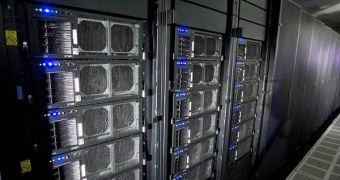Adam may seem like a dubious choice of name for the world's first robotic scientist, but maybe only because every new item of its class ever created is either called that or Eve, depending on the context. Nonetheless, it's the name that experts at the Biotechnology and Biological Sciences Research Council (BBSRC) have given their new computer system, which fully automates the science process, and that has proven capable of discovering new facts all by itself, without the intervention of its human “peers.”
“Computers play a fundamental role in the scientific process, which is becoming increasingly automated, for instance in drug design and DNA sequencing. This has led to more scientific data, increasingly available on the web, which in turn requires an increased use of computers to analyze these data. Robot scientists could provide a useful tool for managing such data and knowledge, making scientific procedures easier and more efficient. This kind of learning will become even more important as we move further towards integrative and predictive biology in the era of Web 2.0 and the Semantic Web,” the Chief Executive at BBSRC, Prof. Douglas Kell, said.
Adam has been designed by a group effort, comprising a collaboration of experts from the Aberystwyth University and the University of Cambridge. From the get-go, it has been created as an autonomous unit, one that does not require constant human guidance for its daily operations.
Two good examples of “obedient” systems are the Mars Exploration Rovers, which have each step of their way mapped out from the ground. In the 20 minutes it takes for the signal to get from Mars to Earth and then back, the machines simply sit, waiting for their instructions.
With Adam, its creators wanted to be spared the necessity of having to care for the robot all day long. So, they have created it in a manner that allows for both sustainability in operation and the ability to make discoveries on its own.
After it was turned on, the Robot Scientist made a few discoveries on the genomics of the Saccharomyces cerevisiae microorganism, which is widely used by experts to model more complex creatures. The amazing thing was that Adam made the finds in a totally new way, which the researchers tested and confirmed afterwards.
“If science was more efficient, it would be better placed to help solve society's problems. One way to make science more efficient is through automation. Automation was the driving force behind much of the 19th and 20th century progress, and this is likely to continue. Because biological organisms are so complex, it is important that the details of biological experiments are recorded in great detail. This is difficult and irksome for human scientists, but easy for Robot Scientists. Ultimately, we hope to have teams of human and robot scientists working together in laboratories,” Aberystwyth University expert Professor Ross King, who has been the one in charge with the research stage for the Adam project, added.

 14 DAY TRIAL //
14 DAY TRIAL //